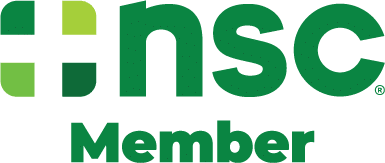Cranes are helpful machines, but they can also be quite dangerous. Even small cranes are capable of lifting extremely heavy loads, so it’s essential that they follow the strictest safety requirements to ensure safe operation for everyone.
The American Society of Mechanical Engineers (ASME) put together a set of safety standards that all crane owners, manufacturers, and operators should follow to ensure safe use of such heavy machines. Here’s what you need to know about the ASME B30.20 requirements.
What Is ASME B30?
As stated, the ASME safety standards are designed to protect those operating and working around cranes and other heavy lifting machines. ASME B30 standard is the section entitled “Safety Standard for Cableways, Cranes, Derricks, Hoists, Hooks, Jacks, and Slings.”

The ASME B30.20 Standards
As you dig deeper, section B30.20 of the ASME safety standards refers all below-the-hook lifting devices, including all overhead and gantry cranes—whether they be top running bridge, multiple or single girder, or top-running trolley hoists. The following topics are covered under ASME B30.20 as they refer to all overhead and gantry cranes:
- Definitions, scope, references, and personal competence
- General construction and installation guidelines
- Inspection and testing standards
- Crane operator training and operation
- General maintenance and training
Every time a lifting device is built, installed, inspected, tested, or maintained, all work must be done according to the safety standards laid out in ASME B30.20.
These safety standards also apply to any clamps you use for positioning and anchoring your hook lifting devices or loads. Every time you attach a load to the hoist, you can feel confident knowing that your crane is secure under part B30.20 of the ASME safety standards.
ASME BTH-1
While technically in a separate section, ASME BTH-1 is another set of safety regulations used in close conjunction with ASME B30.20. It defines the design requirements for developing below-the-hook (BTH) lifting devices.
Some of the design elements covered by BTH-1 include:
- Lifting magnet design requirements
- Electrical component requirements
- Mechanical design requirements, including wire rope, rigging hardware, sheaves, gear, shafts, bearings, and fasteners
- Structural and connection design requirements including all pins, bolts, and welds
- Classification of the hook lifting device based on lifting capacity
ASME B30.20 is a bit broader with its scope, while BTH-1 covers more specific construction guidelines. Together, these two sections are the primary safety standards for all below-the-hook lifting devices.
How to Check for ASME B30.20 Compliance
Before operating a crane, it’s important to know whether it meets ASME safety standards. The best way to determine a crane’s compliance is to check its rated load markings.
If a crane is compliant with ASME safety standards, it should have the rated load marked legibly on the machine itself, typically in the form of a nameplate or other permanent marking. For lifts that contain multiple parts, detachable pieces, or several lifts, each lifting part should also have its own rated load markings.
Each nameplate or permanent tag should contain at least the following information:
- Manufacturer’s name and address (can be a website address)
- Unique serial number
- Weight of the crane (if over 100 pounds)
- Rated load
- Cold current amps (electric hook lifting devices)
- Rated voltage (electric hook lifting devices)
- ASME BTH-1 design category
- ASME BTH-1 service class
With this information, you will be able to tell whether a crane meets the BTH-1 design requirements and its load rating. From there, it’s up to the operator and owner to follow all ASME B30.20 safety standards during operation.
Changes Seen in ASME B30 20
Crane technology is always advancing, which requires the ASME to review their standards and possibly update them based on advancements. The ASME Committee revises the standards based on three main criteria:
- New data
- Technological advances
- Changing industry and environmental needs
In 2021, the ASME made updates to the previous version of the standards released in 2018. Most of the document remained unchanged, but the following aspects were revised to meet changing safety requirements:
- Changes to load test requirements
- Inspection requirements timelines were clarified
- Sections added to cover the removal of crane equipment if unsafe conditions exist, including indicators of heat damage, loose or missing fasteners or guards, excessive corrosion, deformation, cracks, or wear.
All crane owners should have a copy of the latest ASME safety standards, which can be purchased directly from the American Society of Mechanical Engineers website. That’s the best way to keep up with the changing regulations to keep you and your employees safe when operating heavy machinery.
Ensure the Safety of Your Work Environment
Think of the ASME B30.20 as your guidebook when it comes to occupational safety when working with a lifting device. It outlines safety specifications for all under-the-hook crane systems, including the design, operation, maintenance, and operator training.
If you’re not sure if your crane systems meet ASME requirements, it’s a good idea to get a safety inspection from an experienced mechanical engineer like the experts at CraneTech. We offer everything from inspections and repairs to new builds and training. Of course, all services are compliant with all aspects of ASME safety standards to ensure the complete safety of your crew and worksite.
Whatever your lifting equipment need, CraneTech is here to help 24/7 to keep your project moving. Get a free quote on your next project today.




